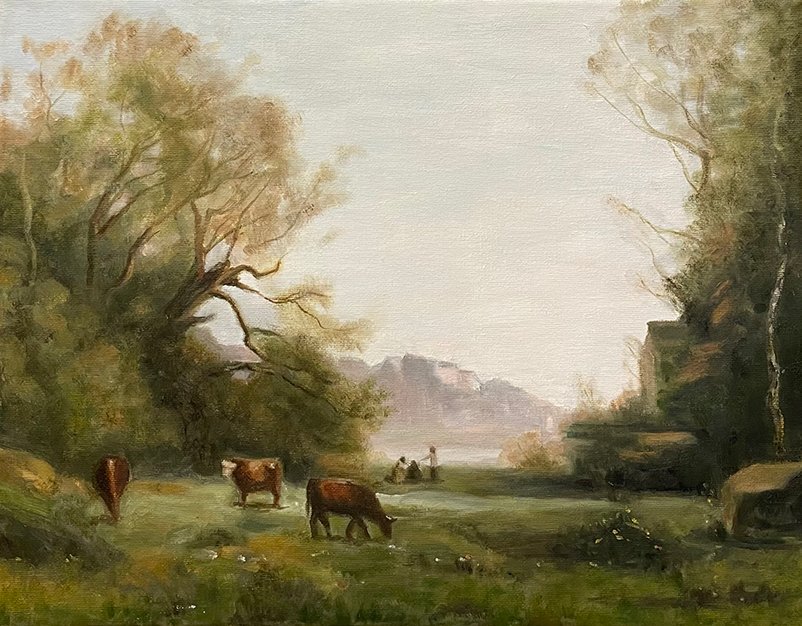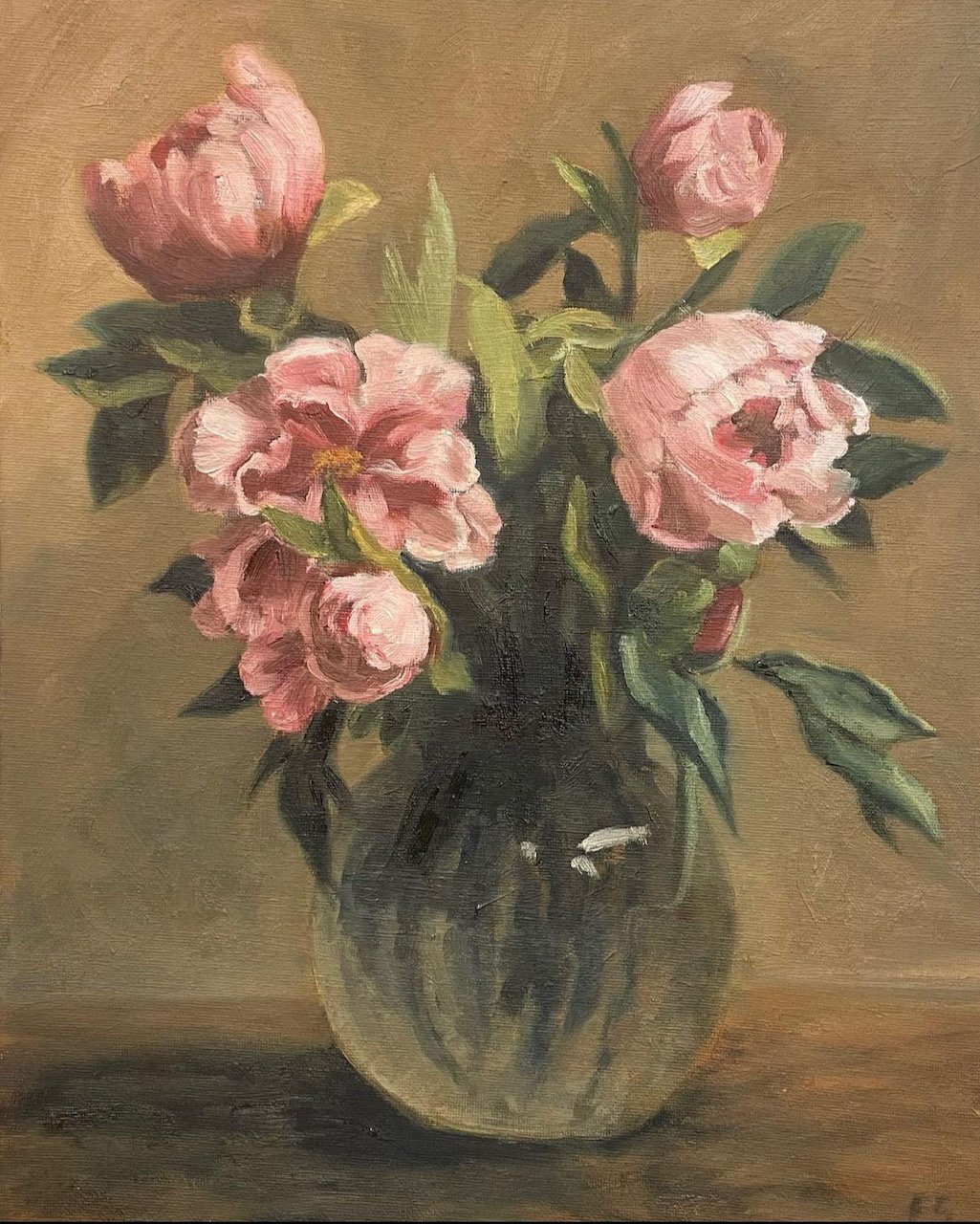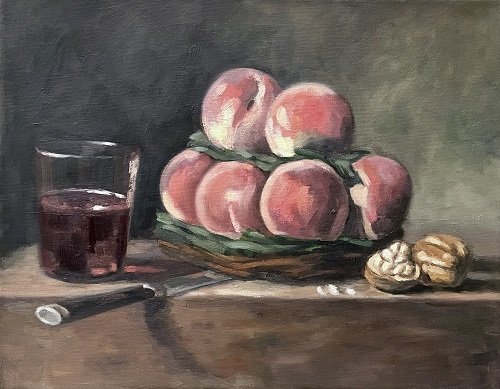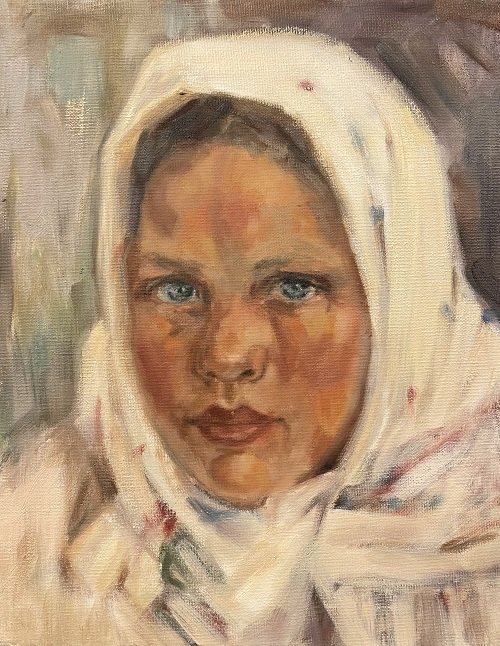Master Copies - Oil Paintings
I find immense joy in directly learning from the master painters of diverse historical periods. This experience enables me to deeply appreciate and absorb the techniques and distinct styles employed by these remarkable artists from the past.

SOLD - Felicity Stone, Copy of Detail from Jean Baptiste Camille Corot's 'Cattle at Pasture in a Wooded Valley', 2023

SOLD - Felicity Stone, Copy of 'Vase of Peonies' by Henri Fantin-Latour, 2023, Oil on Stretched Canvas.

Felicity Stone, Copy of Jean-Baptiste-Siméon Chardin's 'Copper Pot', 2022, Oil on Stretched Canvas.

Felicity Stone, Copy of Jean Baptiste Camille Corot's 'Cows in a Marshy Landscape', 2023, Oil on Stretched Canvas.

Felicity Stone, Copy of Jean Baptiste Camille Corot's 'Rider at the Entrance of the Forest', 2023, Oil on Stretched Canvas.

Felicity Stone, Copy of Detail from Valentin Sorov's 'Portrait of Nadezhda Derviz with Her Child', 2023, Oil on Stretched Canvas.

Felicity Stone, Copy of Jean Baptiste Camille Corot's 'Recollection of Mortefontaine', 2023, Oil on Stretched Canvas.

Felicity Stone, Copy of John Constable's 'Salisbury Cathedral and Leadenhall from the River Avon', 2023, Oil on Stretched Canvas.

Felicity Stone, Copy of 'Still Life with Peaches, a Silver Goblet, Grapes, and Walnuts' by Jean-Baptiste-Siméon Chardin, 2022, Oil on Stretched Canvas.

SOLD - Felicity Stone, Copy of Detail from John Singer Sargent's 'Portrait of Millicent, Duchess of Sutherland', 2022

Felicity Stone, Copy of Nikolai Fechin's's 'Portrait of a Young Girl', 2022, Oil on Stretched Canvas.

Felicity Stone, Copy of 'Still Life with a White Mug' by Jean-Baptiste-Siméon Chardin, 2022, Oil on Stretched Canvas.

Felicity Stone, Copy of 'Three Apples, Two Chestnuts, Bowl And Silver Goblet' by Jean-Baptiste-Siméon Chardin, 2022, Oil on Stretched Canvas.

Felicity Stone, Copy of 'Basket of Peaches, with Walnuts, Knife and Glass of Wine' by Jean-Baptiste-Siméon Chardin, 2022, Oil on Stretched Canvas.

Felicity Stone, Copy of Nikolai Fechin's's 'Portrait of a Young Girl with While Headscarf', 2022, Oil on Stretched Canvas.
Master copies, also known as master studies or copies of masterpieces, involve replicating or closely studying existing works of art created by master artists from various periods. This practice has been a traditional method of art education and offers several benefits for artists at different skill levels. Here are some reasons why artists engage in master copies:
Learning from the Masters:
Studying and replicating masterpieces provide artists with the opportunity to learn directly from the great masters of art. It allows them to understand the techniques, styles, and compositions used by renowned artists throughout history.
Developing Technical Skills:
Master copies help artists develop and refine their technical skills. By replicating the brushwork, color palette, and handling of materials used by master artists, individuals can enhance their own proficiency and craftsmanship.
Understanding Composition:
Masterpieces often exhibit strong compositional elements that contribute to their visual impact. Through master copies, artists can analyze and understand how compositions are structured, how focal points are established, and how balance is achieved.
Color Theory and Palette:
Replicating masterpieces allows artists to explore and understand the color choices made by renowned painters. It provides insight into color theory, mixing, and the use of different palettes to convey mood and atmosphere.
Studying Brushwork and Texture:
Many masterpieces showcase distinctive brushwork and texture. By copying these works, artists can experiment with and understand various brush techniques, strokes, and methods of creating texture in their own paintings.
Cultural and Art Historical Awareness:
Engaging in master copies fosters a deeper appreciation for art history and cultural contexts. It exposes artists to different artistic movements, styles, and the evolution of techniques over time.
Building Confidence:
Successfully reproducing a masterwork can boost an artist's confidence. It provides a tangible measure of progress and accomplishment, especially for those who are still developing their skills.
Problem-Solving Skills:
Master copies present challenges that artists must overcome, such as replicating intricate details, achieving accurate proportions, and capturing the essence of the original artwork. This process enhances problem-solving skills and critical thinking.
Exploring Different Styles:
Artists can use master copies as an opportunity to explore and experiment with different artistic styles. This flexibility allows them to incorporate elements from various masters into their own work, creating a unique and personalized style.
Applying Techniques to Original Work:
The skills acquired through master copies can be applied to an artist's original creations. The knowledge gained from studying the works of masters can inform an artist's choices in terms of composition, color, and technique in their own artwork.
When engaging in master copies, it's important for artists to approach the process with both respect for the original work and a willingness to adapt and apply what they learn to their own artistic practice. Master copies serve as a valuable tool for artistic growth and can contribute to the development of a well-rounded and skilled artist.